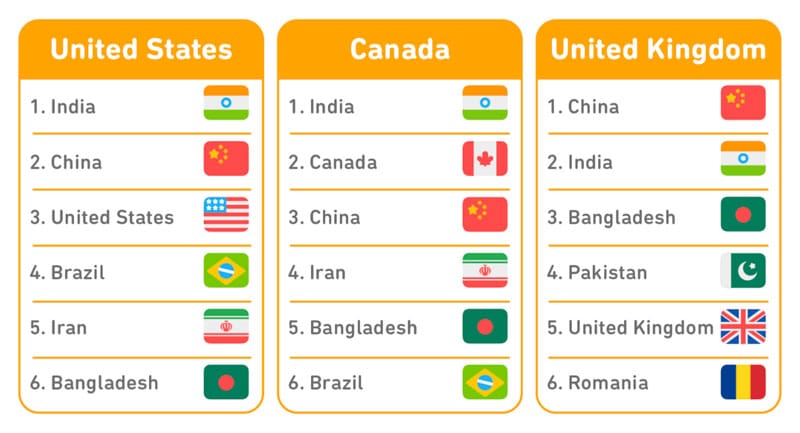Test sharing data provides an interesting window into student choice
- There was a sharp increase in the test volumes for the Duolingo English Test in 2020 and now the company has shared some additional data showing where its test takers are most often sharing their results
With normal English proficiency testing cycles badly disrupted during the pandemic, many admissions offices have necessarily become a lot more flexible around English language testing over the past year.
Some have adopted test-optional policies, others have begun to accept a wider range of proficiency tests. One effect of all that is that more affordable and convenient language tests have gained much more acceptance in universities and colleges than ever before.
Duolingo is one such example. The popular language learning app has a reported total 500 million users – and 40 million active monthly users – worldwide. It offers a proprietary language test which clearly positions itself as a more affordable and accessible alternative to some of the more-established standardised exams. The Duolingo English Test can be taken online at any time, takes about an hour to complete, returns test results in two days, and costs US$49. In other words, it has been well-suited to the highly disrupted environment of the pandemic.
Perhaps it is not surprising then that Duolingo recently reported a dramatic increase in the use of its test last year. The company says that year-over-year test volumes increased by 2000% in 2020. While it has not released official figures on the number of test takers for the year, it has otherwise reported in technical documents that a total of 99,451 people took the test between 1 July 2019 and 30 June 2020. This would suggest that total volumes for 2020 were at least in excess of 100,000 test takers, distributed across 207 countries and representing 144 distinct first languages. The company reports as well that its test results are now accepted at more than 3,000 institutions worldwide.
And this in turn makes a related data release from Duolingo interesting to international recruiters. The company provided a summary recently of how Duolingo English Test results are shared between test takers and the institutions abroad where they hope to study.
Duolingo reports that the three most popular English-speaking destination countries – that is, the three with which its test takers most often share their results – are the United States, Canada, and the United Kingdom. Based on test sharing data for 2020, Duolingo provides the following summary of the top-six countries of origin for test takers sending results to each of those three international destinations.

An accompanying statement from the company adds, "Trends among Duolingo English Test takers are reflective of broader movements observed in international enrolment. India is especially well represented among students sharing Duolingo English Test results...There has been an increase in applications from India to North America this past admissions cycle. [At the same time,] China doesn't occupy the top spot for the US and Canada, which tracks with reports that numbers of Chinese students studying abroad are holding steady or decreasing."
We have no previous referral patterns from Duolingo that these observations could be compared against, but we can only imagine that current travel restrictions, vaccination programmes, and other practical considerations have also had an important influence on the overall pattern of test results sharing this year.
Along with the rising prominence of India as a driver of enrolment growth for leading study destinations, the data provides a window into some of the growth markets that have been noted for each of those top host countries. Iran and Bangladesh, for example, are increasingly important growth markets, and Brazil has been an important sending market for all three destinations for some time now.
It is interesting to note as well that onshore students are prominently represented in the Duolingo table. Students already in the US, for example, were the fourth-largest group to share test results with US colleges. And we see the same pattern in the results for Canada and the UK as well. This reflects the large volumes of foreign students already enrolled in preparatory language or other foundation studies in each country, and the "internal mobility" that that represents as those students move on to further studies at a college or university.
For additional background, please see:
















